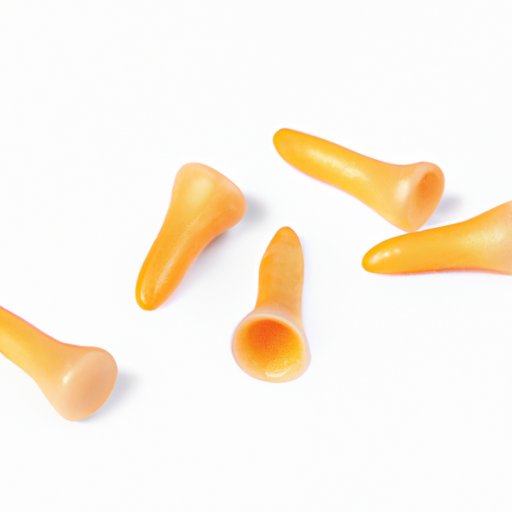
Introduction
Earwax is a naturally occurring substance that helps protect our ears from dust, dirt, and other foreign objects. However, when too much earwax builds up, it can cause discomfort, hearing loss, or even infection. In this article, we’ll explore some safe and effective ways to clean earwax at home, as well as when to seek medical attention.
5 Easy Tips for Safely Cleaning Your Earwax at Home
If you’re looking to clean your earwax at home, there are several methods you can try. One of the simplest ways is to use warm water. Simply tilt your head to the side and gently pour warm water into your ear, then tilt your head the other way to drain the water out.
Another method is to use a saline solution, which can help soften the wax and make it easier to remove. To make your own saline solution, mix one teaspoon of salt with one cup of warm water. Use an ear dropper to put a few drops of the solution into your ear, then tilt your head to drain it out.
For more stubborn earwax, you can try using hydrogen peroxide. Mix equal parts hydrogen peroxide and water, then use an ear dropper to put the solution into your ear. Tilt your head to let the solution work its way into your ear, then tilt your head the other way to drain it out.
From Q-tips to Ear Drops: The Best Tools for Removing Earwax
There are several tools you can use to clean your ears, but it’s important to use them safely and correctly. Cotton swabs, for example, are often used to clean ears, but they can actually push wax deeper into the ear canal and cause damage.
Ear drops can be a safer alternative, as they can soften the wax and make it easier to remove. Ear irrigation kits, which use water to flush out the ear canal, can also be effective, but they should be used with caution and only under the guidance of a healthcare professional.
Why You Should Never Use Cotton Swabs to Clean Your Ears
Cotton swabs, also known as Q-tips, are a popular tool for cleaning ears. However, they can be dangerous and potentially harmful if used improperly. When you insert a cotton swab into your ear, you risk pushing earwax deeper into the ear canal, which can lead to infection, hearing loss, or even a ruptured eardrum.
If you need to remove earwax, it’s best to use a safer alternative, such as ear drops or warm water. These methods can help soften the wax and make it easier to remove without damaging your ears.
Natural Remedies for Clearing Earwax Buildup
In addition to the methods mentioned above, there are several natural remedies that can be effective in removing earwax buildup. Olive oil, for example, can help soften the wax and make it easier to remove. To use olive oil for earwax removal, warm a small amount of the oil and use an ear dropper to put a few drops into your ear. Let the oil sit in your ear for a few minutes, then tilt your head to drain it out.
Garlic oil and tea tree oil are other natural remedies that can be effective in removing earwax. However, it’s important to use these remedies with caution and only under the guidance of a healthcare professional. Natural remedies may not be effective for all types of earwax buildup and may cause side effects in some people.
5 Mistakes to Avoid When Removing Earwax
When it comes to cleaning your ears, there are several common mistakes you should avoid. One of the biggest mistakes is using sharp objects, such as keys or bobby pins, to remove earwax. This can cause damage to your ear canal or eardrum and should never be done.
Another mistake is using cotton swabs, as we’ve already discussed. Pushing earwax deeper into your ears can cause further problems and make it more difficult to remove the wax later on.
When to Seek Medical Attention for Excessive Earwax
If you’re experiencing symptoms of excessive earwax buildup, such as ear pain, hearing loss, or fluid drainage from your ear, it may be time to seek medical attention. Your doctor or audiologist can perform a safe and effective earwax removal procedure, such as ear irrigation or suction, to get rid of the excess wax.
Conclusion
Cleaning earwax safely and effectively is important for maintaining ear health and preventing discomfort or infection. By following the tips and methods outlined in this article, you can safely remove earwax at home and avoid the risks associated with using unsafe tools or methods. Remember to seek medical attention if you experience any symptoms or have concerns about earwax buildup.





